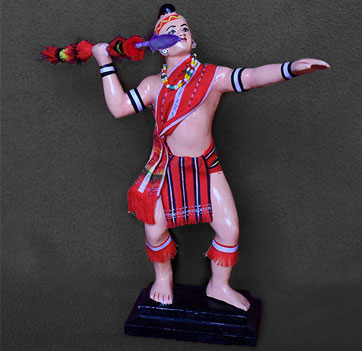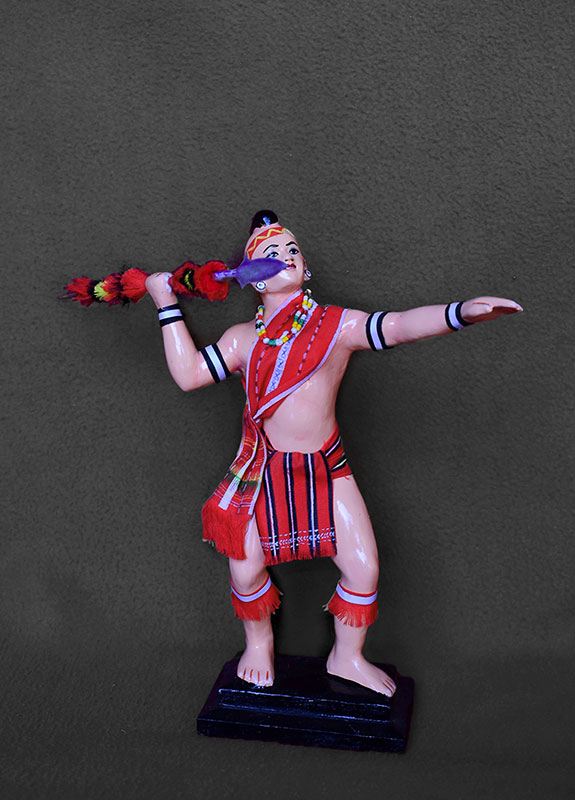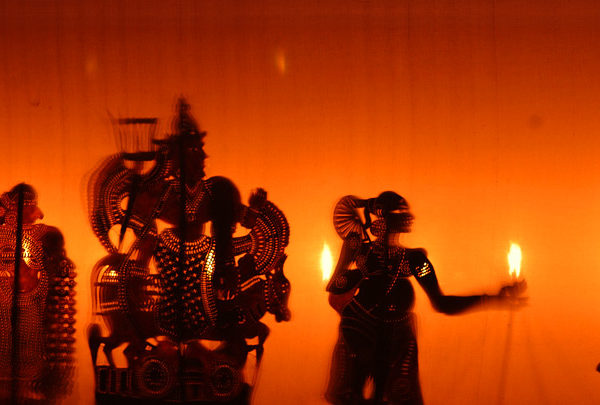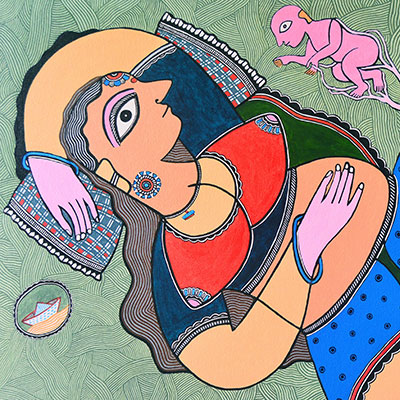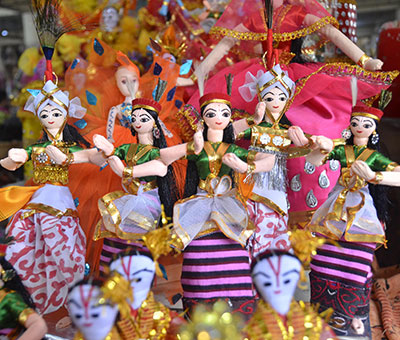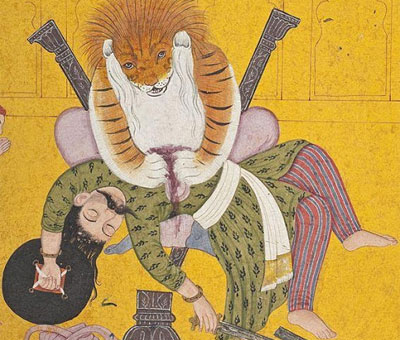The Laiphadibi dolls of Manipur, over the years, have undergone a plethora of changes. The Laiphadibi dolls, originally playthings and objects for ritualistic purpose have also been used as souvenir items because of the intervention of the British, as they took a lot of interest in the crafts of Manipur during the last nineteenth century.
Earlier, the Laiphadibi dolls were made by children and their elders at their homes. The early Laiphadibi dolls did not have any facial features or legs, only a vertical line of colourful thread was stitched across the face to signify the features. For making these dolls, people used old, discarded cloth pieces which were available at their homes, or were collected from the local tailors.To make these dolls, one needed cloth pieces or cotton (for the stuffing), a colourful rectangular piece of cloth (for the dress), and cloth (for the body) along with thread and needle. In order to make the round head, cloth pieces or cotton were stuffed in a piece of cloth and the neck area of the head was narrowed with binding a thread around it tightly, with the rest of the cloth hanging freely acting as the body of the doll.
After the making of the doll, the colourful rectangular cloth piece is wrapped around the body acting as the traditional attire ‘Tonga Phanek’ (wraparound).
With time, the tradition of making Laiphadibis at home came to a decline. Gradually, professional doll makers gave dolls the round face with distinct facial features bearing a ‘smile’ stitched with colourful threads (black for the eyes, nose and eyebrows, red for the lips), and the dolls began wearing the ‘Potloi’ (an ornamental, stiff and cylindrical skirt). To make the contemporary cloth doll, one needs a plain white cloth (for the face), rags (for the stuffing), rice straw (for the skeleton of the dolls), zari fabric, paper, velvet fabric (for the blouse), brightly coloured cloth pieces and thick chart paper or cardboard (for the Potloi), shimmery threads, beads and tiny mirrors (for the rich embellishment). The Potloi is mostly ornamented with beads, threads and tiny mirrors, and then the ‘Boswan’ is sewn around the waist which enables the widening of the Potloi. The robust nature of the Potloi allows the dolls to stand, as they have no legs. The other accessories like necklaces, earrings and the veil are woven by the threads on the Laiphadibi, and the dolls are also scented with natural floral fragrance to add to their charm.
Thangjam Tulachandra Singh, in his paper on the traditional dolls of Manipur, states that the three most important things to be focused on while making the exquisite and intricate designs on the outfits of the Laiphadibi, are: the consistency of the pattern, perfection in shape and its meaningful representation. He also says that the ornaments and outfits worn by the dolls needs to be a result of very meticulous selection and skilled craftspersonship as it is very important in terms of the doll’s aesthetics.
Other than this cloth doll making technique which involves mostly cloth and straws, there are other techniques innovating new materials are also practiced. Doll makers have infused techniques like paper mache, and they experiment with various new materials. Konsam Ibomcha Singh, a prominent doll maker of Manipur who is a State awardee for his contribution to the crafts (2005-06), have pushed the boundaries of the medium, ranging from making small Laiphadibi dolls to huge idols of Gods and Goddesses in the Laiphadibi making style.
He elaborates his process: “At first, we insert wire inside the hollow of the straw for the doll’s malleability and then we use that to make the skeleton of the doll and use strong thread to bind the straws together. Then we stick cloth on the whole straw skeleton with gum which is made of flour. Once the glueing of the cloth is done, we place the doll on top of a pedestal. For the distinct bodily features of the doll, we make a concoction of clay and jute by cutting the jute into tiny pieces and mixing them with clay, and use it to make the distinct body parts of the doll, and then a thin cloth is glued over it, followed by the painting of the body and face using enamel paint. After the paint is dried, the doll is dressed.”
Regarding the maintenance of these dolls, he insists on keeping the dolls away from moisture as they might cause damage to the dolls and the best way to preserve them is to keep them inside a glass box.
He carries on the legacy of doll making from his father Tona Singh, who was a prominent doll maker and he has been the greatest influence for Konsam Ibomcha Singh’s practice.
Text by Anurekha Deb
Image Courtesy: Konsam Ibomcha Singh
Find out more about the craft and craft makers:
https://www.sahapedia.org/laiphadibi-cloth-dolls-guard-and-guide-manipuri-people

